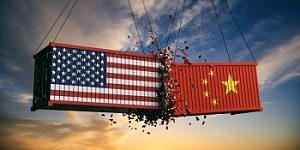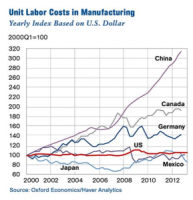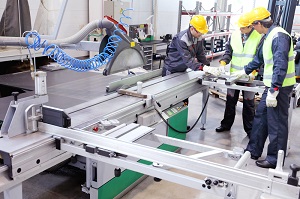China Apparel Tariffs – Tranche 4
Tranche 4 shakes up apparel and footwear supply chains after escaping earlier tariffs
This story was first published in the weekly newsletter, Supply Chain Dive: Procurement. Sign up here.
Dive Insight:
 Although China is currently the country’s largest supplier of textiles and apparel, accounting for nearly 36% of total U.S. imports in 2017, according to the World Bank, previous tariff lists left the industry largely unscathed. The items included were highly specialized apparel categories like “Articles of apparel, of reptile leather.”
Although China is currently the country’s largest supplier of textiles and apparel, accounting for nearly 36% of total U.S. imports in 2017, according to the World Bank, previous tariff lists left the industry largely unscathed. The items included were highly specialized apparel categories like “Articles of apparel, of reptile leather.”
However, the fourth tranche includes nearly all consumer apparel categories in addition to a wide range of material inputs like cotton, textiles, rubber, and leather.
“(Apparel) Importers and manufacturers are startled,” U.S. Reshoring Institute Executive Director and Chairman of the Board Rosemary Coates told Supply Chain Dive in an interview. “A lot of apparel is included in the fourth tranche, and I think people hoped [Trump]was just using it as a negotiating tactic,” she said.
According to the NRF, the proposed rate of up to 25% is more than businesses can absorb without passing the cost onto their customers.
China Apparel Tariffs
“The people buying cheap clothing at Walmart and Target are going to be the most affected by this,” Coates said. “These tariffs are a tax on [those]who just can’t afford a 25% price increase. I’m shocked at this.”
The Trump administration’s stated rationale for the tariff increases over the past year has been to rebalance the “trade deficit” between the U.S. and China and to punish Beijing for persisting intellectual property violations and other offenses. “We know China has IP issues, human rights issues, currency manipulation issues, etc.”Coates said, “but the way to address that is through diplomacy not lunacy.” When asked whether she believed the tariffs would actually go into effect, Coates responded that while many in the apparel industry assumed the administration’s announcement was just a scare tactic to bring China to the negotiating table, ultimately she believes American consumers will pay the price as the negotiations drag on.
In anticipation of this, some apparel and footwear companies like Nike and Gap have begun shifting their sourcing, procurement, and manufacturing to other affordable southeast asian countries like Vietnam and Indonesia. While these preventative measures will be helpful if the latest round of tariffs goes into effect, shifting operations at the country level will take will take time and resources that not every company has the capacity to spend.
“With 41% of all apparel currently produced in China, retailers will need to take a close look at their sourcing and logistics strategies to weigh the costs and benefits of moving elsewhere” American Global Logistics CEO John Slangerup told Supply Chain Dive via email.”We’re already seeing a number of our own customers shift production to neighboring countries…As conditions continue to evolve, apparel businesses that combine a technology-enabled supply chain with experienced logistics support will be best-positioned to manage costs while still meeting customer expectations.”
American companies will have the opportunity to challenge the tariffs during the USTR open comment period in June. Bethany Aronhalt, Senior Director of Media Relations at the NRF, told Supply Chain Dive in an interview that if the fourth tranche of tariffs go into effect it could take years for retailers to adjust. She said the organization is ready to testify in Congress during the comment period where they hope to make a convincing case on behalf of the businesses, manufacturers, and consumers who will be negatively affected by the new regulation.
This story was first published in the weekly newsletter, Supply Chain Dive: Procurement. Sign up here.
The Reshoring Institute offers low-cost professional consulting services for the following:
- Global manufacturing strategies
- Made in the USA labeling requirements
- Reshoring Project Management
- Benchmarking
- Import tariff strategies
- Total cost of ownership modeling
- Technology evaluations
- Leaving your foreign manufacturing site
Based on your specific needs, we can design a custom project to support your reshoring efforts. Tell us what you have in mind and we will design a reshoring process and solution. Contact Us: Info@ReshoringInstitute.org or Call: +1 408-605-8867




